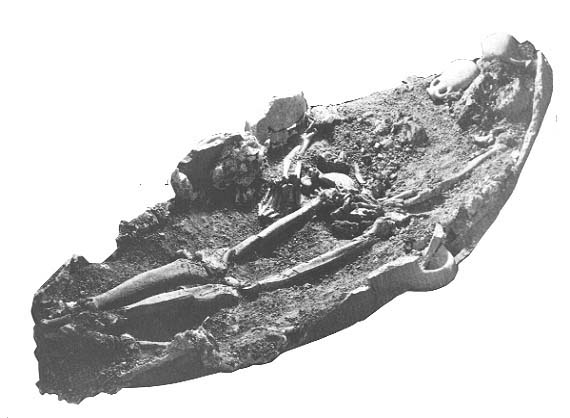Image Details

Israel Department of Antiquities
This ancient burial from the 12th century B.C. was uncovered at Kfar Yehoshua in Israel and reveals the spread of Hittite influence in the Syro-Palestine area. The burial receptacle was formed by joining two large storage jars (or pithoi) shoulder-to-shoulder after the rims and necks of the original jars had been severed. At either end are the pointed bases of the pithoi and toward the middle, their handles. The 40-year-old man found inside the jars was wearing a gold scarab ring and was surrounded by pottery. The top part of the jar covering the body collapsed sometime over the centuries from the pressure and natural disturbances of the ground above.
Many burials of this type have been found in Anatolia dating from the period of the Hittite Empire. The deceased was probably a Hittite man who was buried by his Hittite friends according to the “custom of Hatti,” in early Iron Age Israelite pithoi. The drawing of the pithos illustrates the shape of the original jar before its conversion to a burial container.
